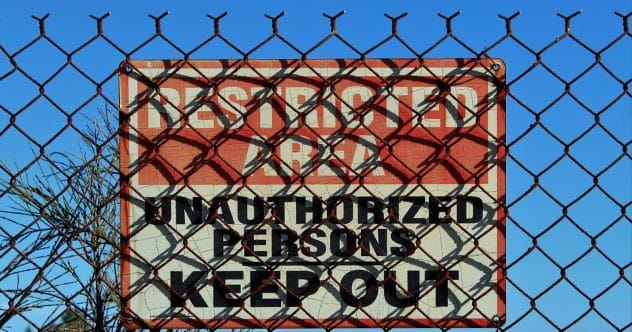Major military powers like the United States, China, and Russia balance showcasing their strength and concealing intelligence and new technologies. In today’s interconnected world, keeping secrets is increasingly challenging.
While governments may deny or obscure information about certain sites, satellite imagery and advanced technologies make it difficult to maintain complete secrecy. Let’s explore ten military installations that aren’t as secret as they seem.
10. Area 6
Located near the infamous Area 51 in the Nevada desert, Area 6 is a smaller, lesser-known base. Officially, it’s an “aerial operations facility” used for constructing, operating, and testing unmanned aerial vehicles. Tests include airframe modifications, sensor operation, and onboard computer development, with a manned chase plane tracking the drones.
Experts believe Area 6 is primarily used for drone testing. Although its existence is known, the area is heavily guarded, and the airspace is restricted. So, Google Maps might be the closest you get to seeing it up close. [1]
9. South China Sea Installations
China has been constructing bases in the South China Sea, particularly in the Spratley and Paracel Islands. They’ve reclaimed approximately 3,200 acres of land from the ocean to build radar units, missile launch sites, and helicopter launch zones.
In 2016, the Chinese government announced the construction of an underwater base more than 10,000 feet below the surface. Speculation is rife about the purpose of these bases, ranging from securing shipping routes to controlling natural gas and oil rights, or serving a more militaristic agenda. Foreign aircraft are warned to stay away, adding to the mystery. [2]
8. Kapustin Air Base
Russia’s equivalent to Area 51 is Kapustin Yar, a Siberian air base shrouded in alien conspiracy theories. Laika, the first living being to orbit Earth, was launched from here in 1957. Former employees have claimed the base is used for alien autopsies and testing secret alien aircraft.
The Russian government didn’t acknowledge Kapustin Yar’s existence until 1983, decades after it was built. The base is reportedly used for rocket launches and low-level nuclear weapons testing. American intelligence believes much of the facility is underground, its full extent unknown. [3]
9. Dulce
Dulce, a small town in New Mexico, is rumored to be a hub for extraterrestrial study. Locals have reported strange happenings for decades. In 1979, a local business owner claimed to intercept alien communications. A retired state trooper found mutilated animal corpses around the town.
Former employees have alleged witnessing a “battle” between humans and aliens. Despite these claims, the U.S. government denies any secret activities in Dulce. Locals, however, remain convinced that something unusual is happening. [4]
6. Dugway Proving Ground
Dugway Proving Ground in Utah, nearly the size of Rhode Island, is considered by some as the “next” Area 51. Established in 1942, it was used to test biological and chemical weapons. Officially, Dugway is meant for testing chemical weapons and developing countermeasures.
The U.S. Army Reserve, National Guard, and Air Force use the area for training and test flights, fueling speculation about its true purpose. In 2018, the government allowed media tours, but access was limited. Skeptics believe there’s more to Dugway than what’s revealed. [5]
5. Mount Yamantau
Deep in Russia’s Ural Mountains lies Mount Yamantau, believed by the U.S. government to be a top-secret nuclear and long-range weapons base, analogous to Cheyenne Mountain NORAD facility. Built in the 1970s or 1980s, its true purpose remains debated.
The Russian government has offered various explanations, from a mining camp to a storage facility for food and valuables, and a hideout for political officials during a nuclear apocalypse. Nearby, the closed city of Mezhgorye houses military battalions that carry out clandestine operations at Yamantau, further fueling speculation. [6]
4. Pine Gap
Located in the Australian outback, Pine Gap is a joint Australian-American military venture known as the Joint Defense Space Research Facility. Since the 1960s, it has operated far from prying eyes.
Initially, it tracked Soviet missiles and spy planes. Today, it reportedly monitors spy satellites. Even former Australian Prime Ministers are not fully informed about its activities. Leaks in 2013 revealed that Pine Gap was used to order and guide drone strikes in Iraq and elsewhere. [7]
5. Raven Rock (Site R)
Raven Rock Mountain Complex, also known as Site R, is an underground bunker in rural Pennsylvania. It’s designed to house American military leaders during a nuclear apocalypse, allowing them to control war efforts from safety.
The facility stretches half a mile into the mountain and another half-mile underground, featuring a power plant, water reservoir, and multiple buildings carved into the rock. With its own police and fire departments, and a cafeteria for over 2,000 people, it’s a self-sufficient community for nuclear fallout survivors. [8]
2. Porton Down
Porton Down, officially the Defence Science and Technology Laboratory, is a British military installation. Established in 1916, it was initially used to test chemical weapons. Today, it studies infectious diseases and experiments with super-viruses, including Ebola, anthrax, and nerve agents.
The British government claims it hasn’t researched chemical or biological weapons since the 1950s, but civilians remain skeptical. Porton Down remains operational, shrouded in secrecy. [9]
1. HAARP
Located in rural Alaska, the High-Frequency Active Auroral Frequency Program, or HAARP, was a jointly-run military base overseen by the Air Force, Navy, University of Alaska at Fairbanks, and DARPA. It studied communication methods and surveillance improvements using ionosphere technology.
Conspiracy theories claim HAARP is used to control the weather, cause earthquakes, manipulate minds, and trigger plane crashes and power outages. Officially shut down in 2014, skeptics believe it remains in use, wreaking havoc globally. [10]
These not-so-secret military installations highlight the ongoing tension between secrecy and transparency in modern military operations. While governments aim to protect sensitive information, advanced technologies and persistent speculation ensure that many of these sites remain in the public eye.
Which of these installations surprised you the most? Leave your comment below!










